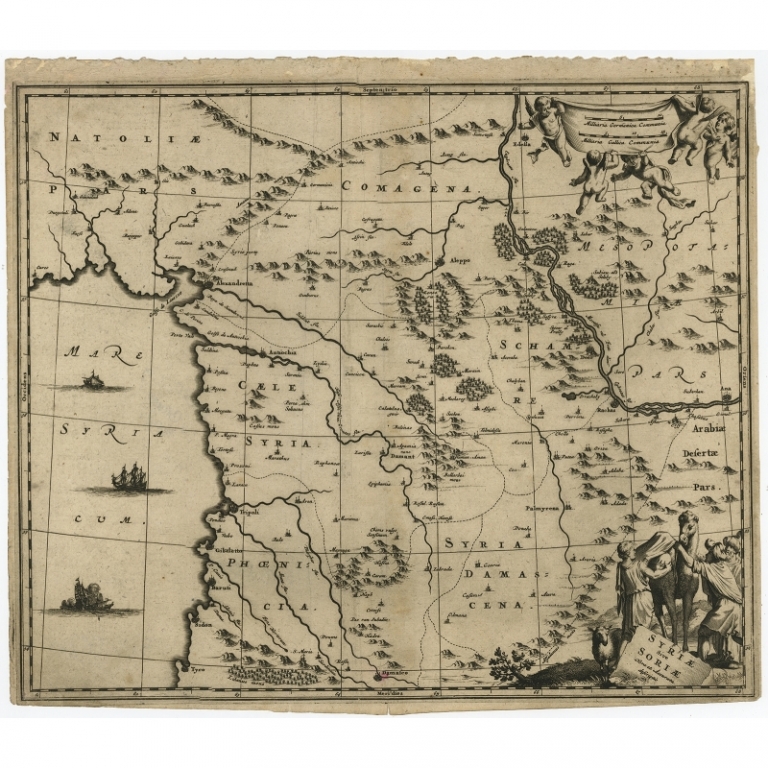FREE
WORLDWIDE
SHIPPING
No products
PCT-61409
Antique Map of Syria and Lebanon by De Bruyn (1698)
- Condition: Good, given age. Paper with some browning. Irregular edges with some tiny tears; bottom edge reinforced. Some crinkles and creases. Original folds as issued. General age-related toning and/or occasional minor defects from handling. Please study image carefully.
- Date: 1698
- Overall size: 36.7 x 31.5 cm.
- Image size: 35.8 x 29.8 cm.
Worldwide
shipping

Description: Antique map titled 'Syriae, sive Soriae, Nova et Accurata Descriptio.' Map of Syria and Lebanon, fully engraved with mountain ranges, forests and cities. Damascus is at the bottom of the map and Edessa (Sanliurfa) is at the top. The coastal cities include Alexandria, Antioch, Tyro, Tripoli, Sidon, and Curco. Source unknown, to be determined.
Artists and Engravers: Made by 'Cornelis de Bruijn' after an anonymous artist. Cornelis de Bruijn (also spelled Cornelius de Bruyn, 1652 - 1726/7) was a Dutch artist and traveler. He made two large tours and published illustrated books with his observations of people, buildings, plants and animals. This is the account of De Bruyn's second voyage. He left The Netherlands in 1701 and sailed to Archangel and on to Moscow, where he lived for more than a year. In 1703 he reached Persia, and after nearly another year in Isfahan, he continued to Persepolis, the ancient Achaemenid palace. His drawings of these ruins were a disappointment to his public as they differed from those they had already become familiar with. By 1705 De Bruyn was in the Dutch Indies, and gives good account of Batavia, Brabant, Bantam, which he illustrates with images of exotic plants, fruits, spices such as pepper, fish and animals, even including a "Filander" or Kangaroo. Best known as a landscape artist, De Bruyn travelled widely from a young age to Vienna, on to Rome then to Smyrna, Constantinople, Egypt, Jerusalem, Syria, Lebanon, and Turkey. Everywhere he went De Bruyn depicted the scenes around him, he was especially interested in places of antiquity or historic interest, and his are the first images of the interior of a pyramid and Jerusalem to be widely available to Westerners. After an eight-year stay in Venice, De Bruyn returned to The Hague in 1693 to publish this first book.



